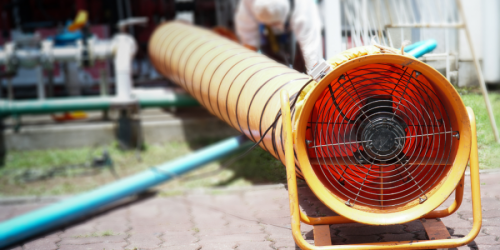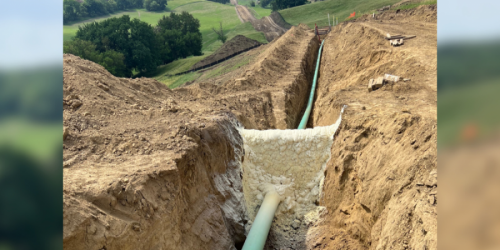Q&A Forums
Moisture content of Open Cell Foam? Post New Topic | Post Reply
| Author | Comments |
|---|---|
|
painter213
Posted: Jul 21, 2016 02:59 PM
|
Moisture content of Open Cell Foam?
I have someone that has some open cell spray foam that is wet. He need's to know the best way to determine what gets removed and what remains. He's planning on testing it with a Delmhorst moisture meter, but not sure what numbers that he should be looking for. As in the allowable threshold to remove or let remain? Any suggestions? As I have never dealt with wet foam before, and not sure about an allowable number that would be acceptable or not. |
|
mason
Posted: Jul 21, 2016 03:31 PM
|
A Delmhorst has 3 settings for measuring moisture. #1 is for Wood and actually provides a percentage of moisture within the wood. Anything more than 18% is considered to wet to paint or to spray foam to. #2 is for concrete and is not a percentage but is just a number from 1-100. It is a qualitative reading and is used by comparing it to other materials that are known to be dry. #3 is typically used for gypsum drywall. The scale is 0.5 to 1.0 with 1.0 being wet and 0.5 being dry. What we look for is how how the number can be and the gypsum still perform. The Delmhorst manual recommends use #1 setting for insulation moisture readings as follows: Procedure: Using the #21-E, insert the #608 contact pins into the holes so that you make contact with the insulation. Press the read button!and take a reading. Take readings at various depths of penetration to determine the location of moisture. Fill holes with putty at the conclusion of the test. Meters are not calibrated to read the percentage of moisture content in the insulation. Instead, meter readings provide a qualitative indication of the presence of moisture. The meter may also help identify the pattern of distribution to help you determine if moisture is due to condensation or leakage. The presence of moisture in insulating material greatly reduces its insulating properties. If the insulating material absorbs moisture, water will displace the air in the material. Water also transmits heat at a faster rate than air, thus reducing the efficiency of the insulation. Side walls and roof insulation pick up moisture because of leaks in the roof or structural defects in the side walls which allow storm water to be forced in during high wind. During periods of cold weather, vapor will condense as it approaches the colder area near the outside walls, and resulting moisture will remain trapped in the insulation. Cork, wood fiber boards, and other cellulose material read lower than glass wool and other inorganic types of insulation. Foam insulation can hold quite a bit of moisture and so long as it doesn't condense, it is typically ok. For example, I have seen moisture readings on closed cell foam at #2 setting as high as 75 or 25% at the #1 setting and the foam is dry. So take a piece of dry open cell foam and take a reading. Then using the #1 setting take a reading of the foam that was wet. See how close it is to the dry foam. Also remember one of the most accurate tools you have for measuring moisture is your fingers. You can sense if the foam is wet, particularly if the foam is a little cool. Also, depending on conditions, the open cell foam may dry some, particularly with heat and ventilation. Put a few fans on it and see how much moisture comes out of it. |
|
painter213
Benny Abbott Phone: 205-717-0292 NACE Level III #7953 SSPC PCS # 2014-529-139 SSPC CCI Level II #64351 Posted: Jul 21, 2016 09:45 PM
|
Thanks Mason! I'm familiar with wet concrete, but not much on wet foam unless if it's wet, either dry it out or rip it out. |





























